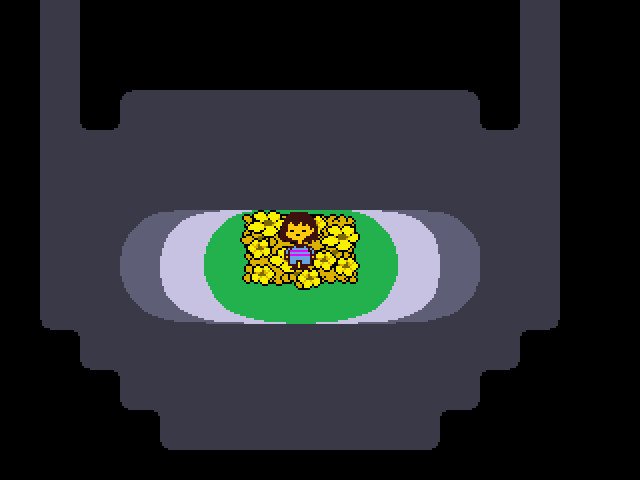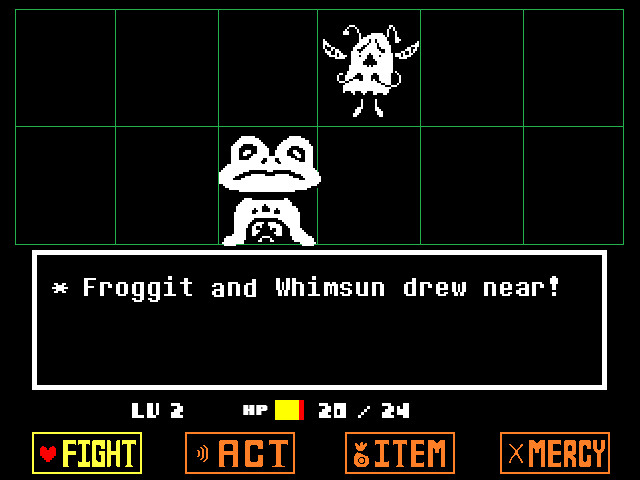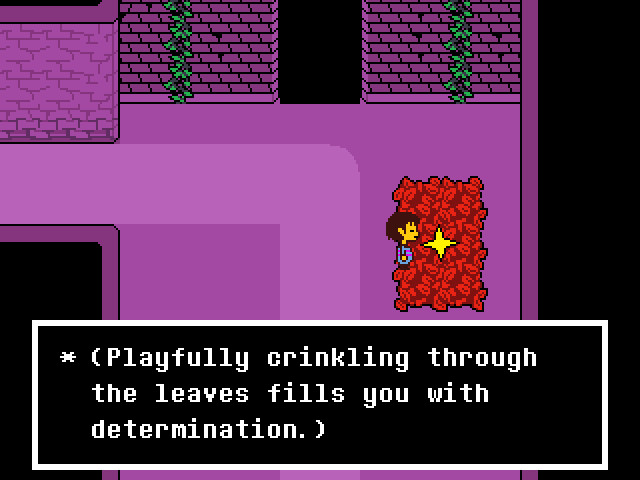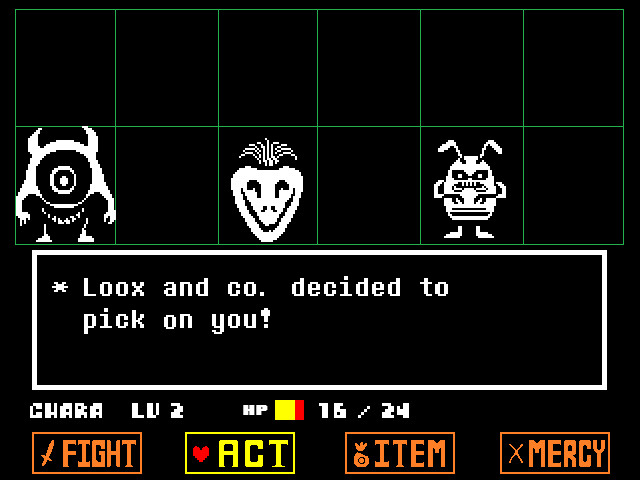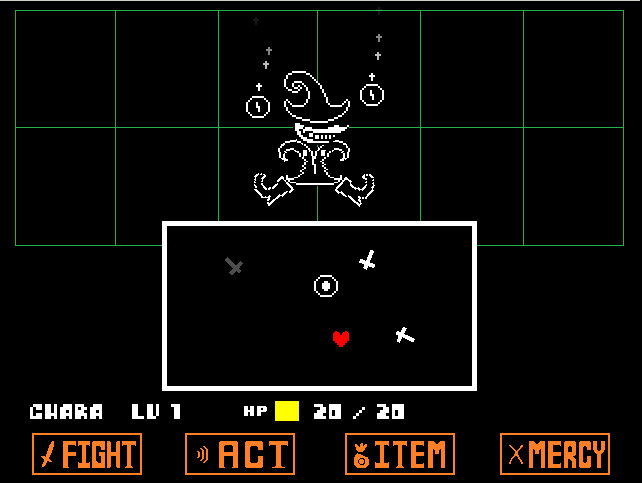Undertale
Developer: tobyfox | Publisher: tobyfox | Release Date: 2015 | Genre: RPG / Indie | Website: Official Website | Purchase: Steam
Undertale opens with a young child falling into a deep pit below Mount Ebott. Although the child survives the fall, they end up in a place under the surface of Earth where monsters have been trapped behind a magical barrier. Humans banished the monsters to this gloomy place after defeating them in a war, so if Undertale were a traditional RPG, the child would not have received a very warm welcome. However, Undertale is a game that delights in subverting expectations. So, the first monster that players encounter is a motherly goat creature named Torial, who wants nothing more than to keep everyone safe. But, of course, players can refuse Toriel’s offer to take care of them and instead venture deeper into the underground, where they might find freedom or something else entirely.
While Undertale might look like a traditional 2D RPG, complete with retro visuals and the ability to earn EXP and increase your character’s LV, there is much more to it. The most significant is that killing is unnecessary, and using the unique battle system to avoid conflict is possible. Of course, players are still free to slaughter every monster they encounter, but the story does change depending on how violent your playthrough is. Since the game is set entirely in the monster world, players won’t be encountering any fellow humans to commend them for their bravery or monster-slaying skills either. Instead, they can learn more about the monsters and try to see things from their perspective instead of just killing everyone.
Another standout feature of Undertale is the quirky and charming cast of characters. From the skeletons, Sans and Papyrus, to Undyne, the head of the royal guard, and Aphys, the royal scientist, players will find plenty of memorable monsters to converse with. Many start as enemies and stay that way unless players look for more diplomatic solutions to battles. Some scripted battles are unavoidable but don’t have to end in bloodshed, while the traditional random encounters are also still present. These can become somewhat repetitive, especially when aiming for certain endings, but the unique combat system makes them less of a grind than traditional RPGs.
Although players can encounter plenty of other characters, there is no party system, and each battle must be fought alone. During combat, players can fight a monster, perform an action, use an item, or show mercy by sparing the monster or fleeing from battle. Fighting takes the form of a quick-time event where players must time their button presses to increase the damage of their attacks. Opening the ACT menu displays actions that are unique to most monsters. For example, players might be able to talk, pet, flirt, or even flex at an enemy, depending on their type. When it is the turn of enemies, players can dodge their attacks in a unique bullet-hell style mini-game. Instead of their character, players control a small heart that represents the protagonist’s soul.
This heart is confined to a small box where players can move it around to dodge the various projectiles hurled by enemies. The projectiles change depending on the enemy type, so skeletons might hurl bones at the player, while other fights might require dodging tears, sweat, flies, roaches, and soap. There’s much more to these battles than simply dodging attacks, but we don’t want to spoil too much.
Undertale is a very dialogue-heavy game, meaning there’s less emphasis on puzzle-solving or exploration. The puzzles are mostly simple affairs, while some more complicated-looking ones are just there for laughs. The path players take through the game is very linear, but their actions along the way influence how things turn out in the end. Unfortunately, this does mean that trying to see all the endings will require a lot of repetition. In an interesting twist, being wholly evil and trying to kill everyone in sight is one of the most challenging routes through the game. However, only the most ruthless players won’t feel remorse afterward.
One thing is for sure, Undertale is a game that is best experienced by knowing as little as possible beforehand. It has definitely been influenced by quirky classics such as EarthBound but has enough unique contributions of its own to make to the genre. For example, the mini bullet hell battles alone make for much more involved combat than hitting the same button on a menu over and over, which is typical for many RPGs. Visually, the environments can be a bit bland and generic, but the same can’t be said about the character designs. Despite using simple visuals, the characters are all very memorable, and it is easy to grow attached to some of them. Likewise, the audio is really good, with plenty of tunes that effortlessly burrow into your brain and stay there for quite a while.
It would be easy to dismiss Undertale as another indie RPG based solely on how it looks, but doing so would mean missing out on something truly special and unique. It is hard to explain why the game is so acclaimed without any spoilers, but suffice it to say there’s much more to it than meets the eye. Players who absolutely can’t abide retro visuals or hate everything about the role-playing genre might bounce off the game quickly as the opening moments are not the greatest, unfortunately. However, those willing to give it a shot and stick with it will soon find themselves drawn into a memorable experience that hits way harder emotionally than many games with ten times the visual fidelity.
System Requirements
- Minimum PC System Requirements
- Recommended PC System Requirements
- Minimum Mac OS X System Requirements
- Recommended Mac OS X System Requirements
- Minimum SteamOS + Linux System Requirements
- Recommended SteamOS + Linux System Requirements
- OS: Windows XP, Vista, 7, 8, or 10
- Memory: 2 GB RAM
- Graphics: 128MB
- Storage: 200 MB available space
- OS: Windows XP, Vista, 7, or 10
- Processor: 2GHz+
- Memory: 3 GB RAM
- Graphics: 512MB
- Storage: 200 MB available space
- OS: Mac OS X
- Memory: 2 GB RAM
- Storage: 200 MB available space
- OS: Mac OS X
- Memory: 4 GB RAM
- Storage: 200 MB available space
- OS: If you can run other games on Steam, it’s probably OK
- Memory: 2 GB RAM
- Storage: 200 MB available space
- OS: Ubuntu 14+
- Memory: 2 GB RAM
- Storage: 200 MB available space



